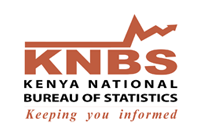 World Health Organization (WHO) estimates that 3.2 billion people are at risk of malaria worldwide. Sub-Saharan Africa is disproportionally affected; in 2015, the region had 88 percent of malaria cases and 90 percent of malaria deaths (WHO 2016). In Kenya, malaria remains a major cause of morbidity and mortality with more than 70 percent of the population at risk of the disease (MOH 2014). The malaria burden in Kenya is not homogenous. The areas around Lake Victoria and on the coast present the highest risk, and children under age 5 and pregnant women are the most vulnerable to infection.
World Health Organization (WHO) estimates that 3.2 billion people are at risk of malaria worldwide. Sub-Saharan Africa is disproportionally affected; in 2015, the region had 88 percent of malaria cases and 90 percent of malaria deaths (WHO 2016). In Kenya, malaria remains a major cause of morbidity and mortality with more than 70 percent of the population at risk of the disease (MOH 2014). The malaria burden in Kenya is not homogenous. The areas around Lake Victoria and on the coast present the highest risk, and children under age 5 and pregnant women are the most vulnerable to infection.
In Kenya and around the world, major efforts have been made to reduce and eliminate malaria. The objectives of combatting the disease are intrinsically linked to most of the United Nations’ Sustainable Development Goals, as they were to nearly all of the Millennium Development Goals, and are in line with Kenya’s Vision 2030. The Ministry of Health, through the National Malaria Control Programme (NMCP), has implemented sound policies and evidence-based strategies in the fight against malaria. Key interventions include the provision of long-lasting insecticidal nets, intermittent preventive treatment for pregnant women, and prompt diagnosis and effective treatment of all malaria cases. Interventions also include improving the capacity of health providers and strengthening the supply chain to deliver diagnostic tests and quality-assured medicines at all levels of the health system. These interventions are supported by a robust advocacy and communication platform focused on enhancing demand and uptake by communities.
NMCP also engages in routine monitoring and periodic evaluations as these are important components in forming malaria policy and programs. Routine monitoring through the surveillance and health information system provides regular status updates on malaria prevalence. The information generated serves to assess performance against targets and guides immediate actions. Periodic evaluations through facility and community surveys provide a long-term view of trends and progress against targets.
The 2015 Kenya Malaria Indicator Survey (KMIS) is one such periodic evaluation undertaken at the community level. This is the third such surveynin Kenya; the first was undertaken in 2007 followed by a second in 2010. The main objective of the 2015 KMIS was to measure progress achieved in key malaria indicators since the 2010 KMIS.
The specific objectives were:
1. To determine the progress of key malaria interventions as stated in the Kenya Malaria Strategy 2009-2018(revised 2014)
2. To assess malaria parasite prevalence among children age 6 months to 14years
3. To determine anaemia prevalence among children age 6 months to 14 years
The survey was based on a nationally representative sample drawn from the four epidemiological zones in the country. Twenty five field teams successfully interviewed individuals in 6,481 households. In each household, women age 15-49 were eligible for interview, and children age 6 months to 14 years were eligible for anaemia and malaria testing. The results of the interviews and testing are presented in this report. Downloads
